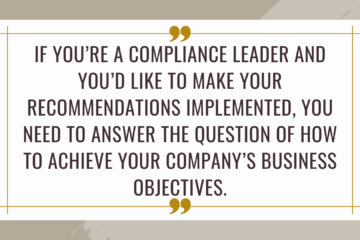How to Succeed in Due Diligence? (Part 2 – Form and Content)

Photo by Emma Matthews on Unsplash
Let's face it, due diligence processes are overwhelming: They never end, you feel like you are going over the same items for a thousand times, nobody is listening to what you say and if they do, they find obscure ways to turn it against you and make you look like you are unprepared.
In the first part of this two-post series we have seen how important it is to understand the perspective of a compliance person who will be reviewing your due diligence documentation. We have also seen how to present your business in a way that doesn't completely freak them out and how to be transparent and upfront about your risks.
Today, we will go through some elements of form and content in the materials that you send that will turn the same compliance person into your new best friend a critical ally in your fundraising or partnership negotiations process.
Part 2 - Phenomenal Form and Killer Content
Ok, first of all, when the first questions or requests regarding your policies start pouring in (they will!) your instinct will likely tell you to open all your 8 policies and 21 standard operating procedures and start copy-pasting paragraphs like there is no tomorrow, directly into the email chain. Please don't.
Just like in the first part, don't forget, the due diligence is essentially a marketing exercise with a very particular (and very picky) set of stakeholders, and the best way to convince these stakeholders is to present your company in its Sunday-best.
First - standardize the presentation of all of your company documents:
Make a few decisions with regard to form and layout of your company documents and stick to them. It gives your organization an important flair of professionalism and internal discipline.
- Which types of documents (policies, contracts, SOPs..) get a cover page / table of contents and which ones do not?
- What's your company font? Typical font size? Hierarchical order of bulletpoints?
- Do you make the company logo appear on the cover page alone, or in the header/footer of every page?
- Page number formatting?
- Graphical style and colour palette of graphs / charts / other visuals? It's important to stay sober and professional, but remember that no one likes wall of texts in black and white, either.
- Document version control tables, last and next review dates, name formats (please avoid "AML Policy v.3 final complete definite reviewed approved", thank you). Watemark draft version as such. Absence of a watermark usually implies a final version.
- PDF-only, please!
You already do most of those things when you are pitching to investors, at conference or on social media. So why not set up some ground rules for the internal workings, too?
Second - respond with standardized attachments and short references:
DON'T
- Copy-paste long paragraphs;
- Try to summarize 30-page legal documents in 2 sentences;
- Set out to describe your business model in an email;
- Attach documents "just in case". Instead, stick to those that are directly relevant for the questions that you were asked.
- Be generic, vague or bragging;
- Try to explain everything that is technical.
- Be afraid if your policies / procedures are technical.
DO
- Make short links between the questions you were asked and your attachments ("ABC can be found in policy X, please find attached.")
- Diversify your attachments: Board minutes, risk assessments, legal opinions, audit reports, external validations, flow of funds diagrams etc.
- Be specific, factual, technical and visual. Screenshots from tools, dashboards, Tableau etc. are amazing - leverage them.
Your compliance interlocutor doesn't need to understand every piece of tech or internal procedure or tool that you have, they just need to see that you have it and that if serves its purpose well and that your organization is applying everything in a disciplined and coherent manner.
May the due diligence checks, from now on, be ever in your favour!
P.S.
If you are super busy and wish you had more time for regulatory research, networking or training your team, I am happy to offer you 2 separate very popular bundles of compliance templates - to free-up your time and let you re-use templates, policies and checklists that have been successfully tried and tested by multiple FinTech startups in the recent past:
- AML/CTF templates bundle with a sample AML/CTF policy, several SOPs, AML risk assessment template and Digital Onboarding Guide for natural persons and legal entities
- Data Protection and GDPR bundle with Privacy Policy, Standard Contractual Clauses language for data transfer with vendors and partners, Binding Corporate Rules template and Directorship Services agreement template.



